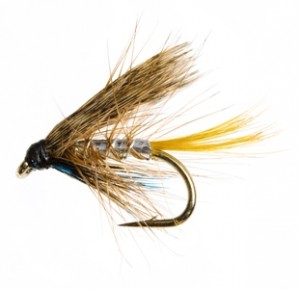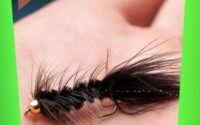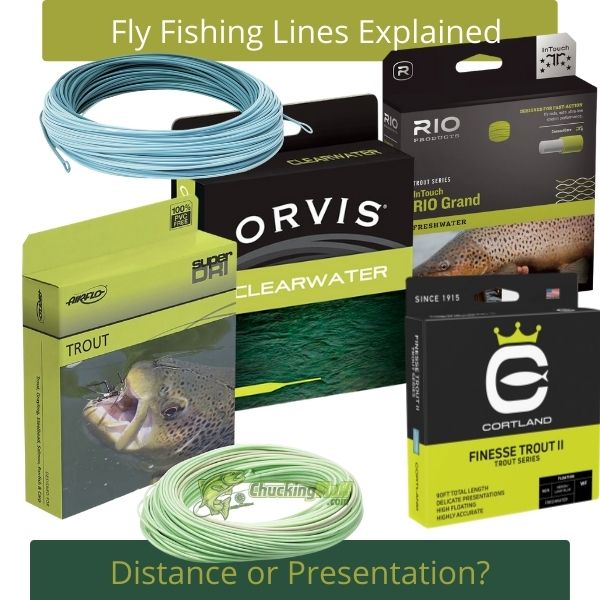| Disclosure: Just to be open and honest the buttons and links you click on in the website will in most cases take you to another website where you can purchase the products I am reviewing. As an Amazon Associate I earn from qualifying purchases. |
What Flies Should You Take With You – Beginners Guide to Catch More Trout
When going to fly fish for the first time what flies should you take with you? This is a question I was asked frequently while working in the tackle shop and I think it is worth answering here.

Trout have many variations around the world and each has its own set of flies that work well. Checking with the local tackle dealer can produce a good selection of proven patterns that have been producing results.
It is always prudent to check with them from time to time to see if new patterns are working or variations in fishing style are producing results.
I would always check in with the hut before putting a fly on the water where ever I go as local knowledge is supreme when getting yourself set up.
Tip: Check the fishing forums before setting off!
If however you are going somewhere away from the beaten path then some prep beforehand can be fruitful. Fishing forums can be a good place for advice.
You can usually ask the question what patterns have proved successful on this water recently or last season around the same time and someone will more than likely have been there and can tell you how they got on.
Seasonal changes in insect life and trout habits!
Note: The following is descriptive of European Brown trout and Rainbow trout but may also prove effective for trout from other areas around the world.
There are four seasons as you are aware however these can be divided into segments of smaller size frames in respect to the hatch of insects taking place at that time.
Although we are taking in seasons let’s be clear that insects don’t work to the same time line as you and me. It all depends on weather conditions as to the timing of a particular hatch.
Hatches can go on for longer periods of time than usual also if conditions remain favorable. Also seasons overlap and the changes are gradual rather than dramatic.
Of all the seasons’ winter is the longest in that there is virtually no hatches going on.
Trout fishing during these months you are not trying to match any hatch but in fact match the munch as there are creatures that reside in the water all year round.
Including Minnows, Sticklebacks, Crayfish, Water Slaters, Water snails, Freshwater shrimp, Waterboatman etc a good fly to match or mimic a few of these is the Gold Ribbed Hairs Ear and the Pheasant Tailed Nymph.
Both of these patterns are weighted so to get down to the bottom where most of these insects reside.
Patterns like the Silver Invictas, Butchers and other silver bodied winged flies that represent minnows and fries are a good bet and ones I always carry with me.

As we move into spring we find there are days when the temperature has raised sufficiently so small hatches occur and can start trout feeding on surface insects.
In the early season stages you are likely to get darker larger flies than later on in summer when they tend to be smaller and lighter in colour. During spring fishing dun flies are more readably taken than spinners.
Dark Olives a trout favorite!
I would opt for a large dark olive nymph fly during this time of the year as one to have in the box. It is also beneficial to have it again in mid autumn as the fly re-appears for a short spell.
A gold ribbed hare’s ear is also a good mimic for this insect if you have no olives in the box.
A good way to fish this fly is to let it sink then lift the rod tip in small jerks to allow the fly to rise and fall as if escaping to the surface. Trout seem to find that irresistible.
Mayfly time, a special time!
No spring fishing trip would be complete without a Mayfly or two and having a collection of mayfly nymphs and up-wing duns is important.
The nymph version mimics the burrowing mayfly insect which scurries along the bottom for up to two years before hatching into flying insects.
It is during the hatch that they are most vulnerable to being taken by hungry trout.
Irish Mayfly fishing can be frantic affairs with flies hatching all over the place.
Trout are then feeding to extreme and become very focused on their prey that if you match the hatch you should come up trumps but that is not always the case.
I have seen trout move along a slick picking flies at their leisure and pass by my artificial flies time and time again.
Days like these can be very frustrating and if a trout does take the fly it is very important to wait for at least three seconds to give these slow meandering trout time to turn with the fly and then tighten down.
So many tighten too quickly after coming off the nymphing weeks when using smaller flies the need to tighten quicker is required.
Other flies useful during spring are sedges hawthorns, alders, black midges, black gnats, and stoneflies to name a few.

As we move into summer hatches occur early morning and late evening as the daytime temperature climbs and has less and less activity.
If fishing during midday you would be better served nymph fishing the bottom that dry flies as the trout are further from the sun on the bottom and you may get better results.
The Evening Rise – Awesome!
The evening rise can be a fantastic time with trout on a feeding frenzy taking insects right up till dark.
Days like these are great to be on the water as it gives you good indicators as to the quantity of trout in a particular swim.
Saying that there are times when you arrive at the water expecting the rise to be great when it is nonexistent.
It could be the weather is changeable or the trout are not interested in the insect life available but its days like this that un-matching the hatch can be helpful.
Summer fishing patterns include Tups Indispensable, Greenwells Glory
, Caenis, Silver Sedge
, Bloodworm, Coch-y-bonddu, Damsel flies, Flying ants, and late summer Daddy long legs. A selection of these will cover most insects available for matching hatches.
Is that debris on the water alive?
The change to transition from summer to autumn can be very dramatic as one minute you are fishing fine days with clear waters then the next they are full of leaves and debris as the winds pick up and the fall begins.
Any trout left in still waters has had a summer of evading flies and will be a clever target to pursue, to catch them you need to have a more thoughtful approach in tackle and presentation.
A cast out of place will not fool them and so precision is the name of the game.
However there are still other targets about and some of the earlier insect mentioned now make a re-appearance for one last flurry before winter.
I suppose its nature’s way to ensure survival of the species that the hatch is varied across seasons.
During the windier days of autumn all sorts of insects get blown onto the water including beetles and daddy long legs that don’t normally get caught on the water.
It can be fruitful to have a few of these in the fly box when other normal patterns including sedges are not proving successful.
A few seasonal fly fishing tips: check water temperature. Brown trout will feed well from 10 deg centigrade to 17 deg any more and they become lethargic and don’t react the same.
Rainbow trout may tolerate a few degrees higher but again will go off. Also lower temperature have the same effect with the trout lying on the bottom hardly moving as if dormant.
So in very cold conditions try to move to an area that is more prone to warmer temperatures. If its sunny the shallows will heat up quicker and may provide a bit of sport.
In the other extreme on hot days try the deepest water on the fishery is the best place to try as that water is less likely to fluctuate.
Also at night the shallows will cool quickly bringing big trout in to feed late on and again early in the morning when the morning and evening rise is apparent.
So there you have a season of fishing and an array of flies used across it. I hope you find some useful tips here and have success on the water.
Feel free to leave a comment below and share with your fishing buddies.



My son just started a job rebuilding a Coast Guard station on the Grand River which flows into Lake Erie. Locals say there are a lot of steelhead and brown trout in the river. His only problem is he has never river fished for them. He has checked in with the local bait shops and is getting some good info
Yes John local knowledge is KING when it comes to staking out a new swim or river. If he can tell him to check the activity on the river at different times of the day, if hes working near by it shouldn’t be hard, that way he should get a good indication to when the trout are feeding and so give him a good time frame to try.